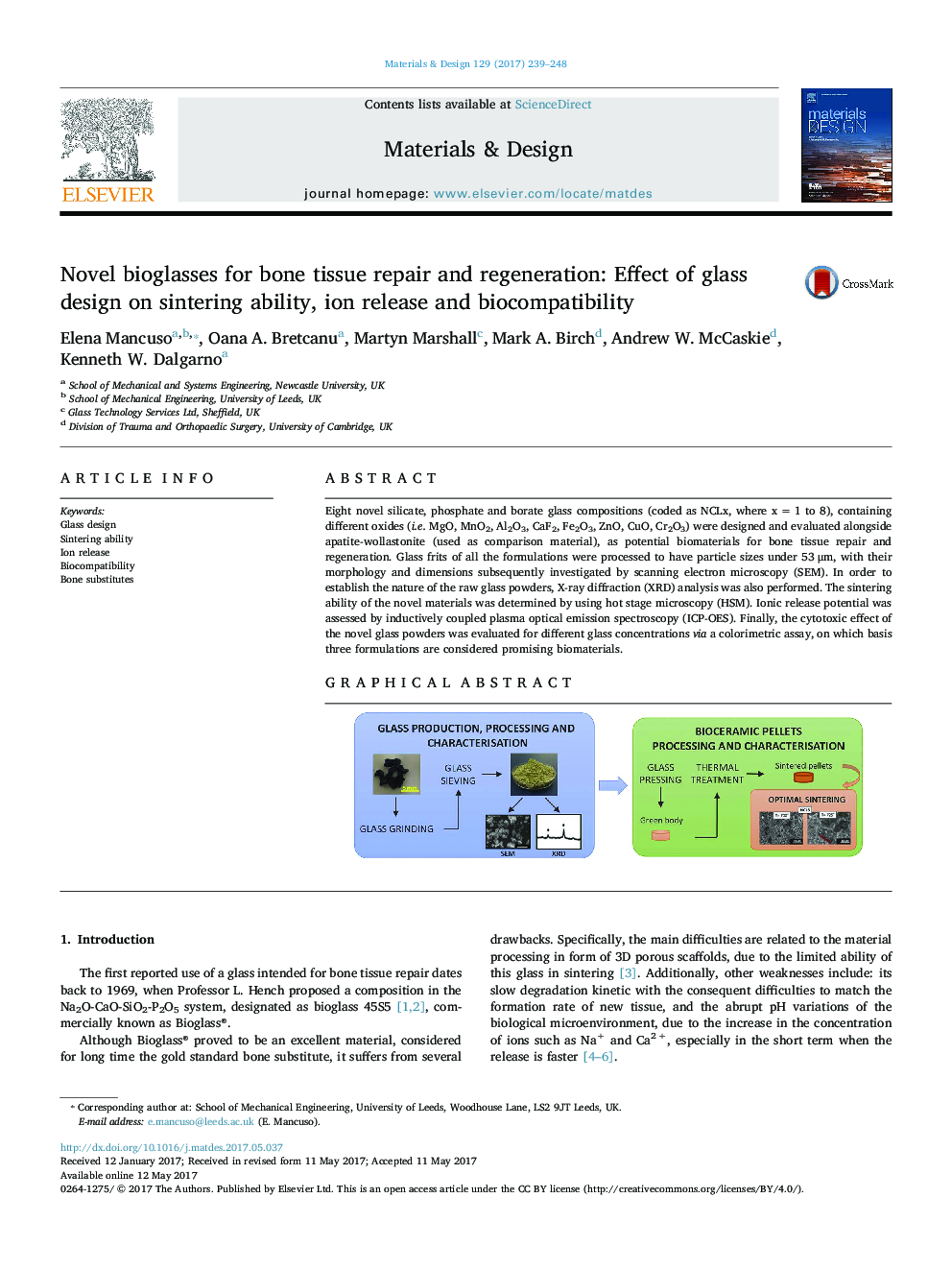| Article ID | Journal | Published Year | Pages | File Type |
|---|---|---|---|---|
| 5023633 | Materials & Design | 2017 | 10 Pages |
â¢Eight novel bioglass compositions based on silicate, phosphate and borate network formers have been investigated;â¢The glass forming ability of the formulations was composition dependent;â¢HSM proved an effective method to obtain accurate information about the thermal behaviour of the novel formulations;â¢Three formulations are considered to show promise for future application as musculoskeletal biomaterials.
Eight novel silicate, phosphate and borate glass compositions (coded as NCLx, where x = 1 to 8), containing different oxides (i.e. MgO, MnO2, Al2O3, CaF2, Fe2O3, ZnO, CuO, Cr2O3) were designed and evaluated alongside apatite-wollastonite (used as comparison material), as potential biomaterials for bone tissue repair and regeneration. Glass frits of all the formulations were processed to have particle sizes under 53 μm, with their morphology and dimensions subsequently investigated by scanning electron microscopy (SEM). In order to establish the nature of the raw glass powders, X-ray diffraction (XRD) analysis was also performed. The sintering ability of the novel materials was determined by using hot stage microscopy (HSM). Ionic release potential was assessed by inductively coupled plasma optical emission spectroscopy (ICP-OES). Finally, the cytotoxic effect of the novel glass powders was evaluated for different glass concentrations via a colorimetric assay, on which basis three formulations are considered promising biomaterials.
Graphical abstractDownload high-res image (132KB)Download full-size image
